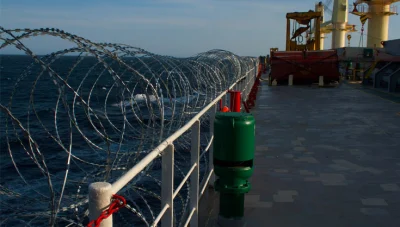Overview
The risk of maritime piracy remains high in certain parts of the world’s oceans. While the threat can never be totally avoided, it can be effectively managed, and the latest digital solutions are here to help.
The safety of the ship, its crew, and its cargo is the number one priority of ship owners and operators throughout every voyage. This may sound straightforward enough so long as the proper procedures and safety measures are in place. However, the fact remains that there are certain ocean areas where, because of piracy, safety cannot be taken for granted. In these situations, extra caution is essential.
The threat remains serious
During the early part of this century, the shipping world was shaken by repeated reports of pirate attacks on ships off the coast of Somalia in East Africa. Armed groups in small boats established a lucrative trade by holding ships and their crew for ransom, with substantial payments being demanded and often paid.
The Combined Task Force 150 (CTF 150), a multinational coalition task force established by the US Navy, subsequently took on the role of fighting piracy off the East African coast. Its area of responsibility included some of the world’s busiest shipping lanes, spanning over two million square miles, covering the Red Sea, Gulf of Aden, Indian Ocean and the Gulf of Oman.
This had some effect and the number of piracy incidents in the area was steadily reduced. However, a pattern had been established and by the end of 2008, pirates began targeting ships well beyond the Gulf of Aden. The high risk areas became extended to include other shipping routes, and the overall frequency of attacks again increased. Furthermore, the attacks became more and more sophisticated with time.
The International Maritime Bureau’s Piracy Reporting Centre (IMB PRC) notes that in 2022, global piracy and armed robbery attacks decreased slightly compared to 2021. However, there were still 115 incidents — not an insignificant number. Half of the 2022 attacks on ships took place in South-East Asia, with the Straits of Singapore being particularly vulnerable. Other areas of special concern include areas of South and Central America, notably Peru’s Callao Anchorage and the Macapa Anchorage in Brazil, as well as the seas around Ghana and Angola in West Africa.
While increased naval presence and cooperation between coastal authorities have lessened the threat in some regions, the Gulf of Guinea being a prime example, the piracy risk remains. The threat is widespread across the world’s oceans and ports, and today affects some seas that were previously considered to be relatively safe. South Africa and Egypt, for example, both reported incidents in 2022. Although there haven’t been any attacks by Somali pirates for several years in the high risk area of the Indian Ocean, vigilance continues to be recommended by the IMB PRC.

Managing the piracy risk
Since ships cannot always avoid sailing through high risk zones, companies need to be properly prepared to manage and mitigate the risk. The same applies when berthed in high-risk ports. There are a number of physical steps that may seem fairly obvious, but which can nevertheless be easily overlooked. These precautions include vigilant watchkeeping, having bright deck lighting installed, using loud alarm systems to demonstrate awareness, having onboard equipment well protected, and having physical barriers to control access to the bridge and other critical areas. Operators may also consider hiring private security where appropriate.
When planning a voyage through potentially dangerous areas, the crew should be made aware of the best industry practices and how to implement them. Crew training on how to react to attacks is also important. The most effective defence, however, is likely to be in knowing what to expect and when. This can be delivered by technology, and through having all relevant information at hand.
For example, OneOcean has a new predictive alerts feature, which can be set by shoreside teams in FleetManager. This notifies onboard and onshore personnel when vessels are nearing high risk zones, triggering security protocols and preventive measures to be taken to safeguard the vessel. OneOcean’s Regs4ships also contains an Anti-Piracy section which is continually updated with the latest communications and reports on piracy. These same zones are denoted on the OneOcean platform as well, where zones with recent piracy reports are denoted visually on the chart interface.
When it comes to mitigating the risk of modern piracy, clarity and access to up-to-date reporting can go a long way towards protecting vessels.

